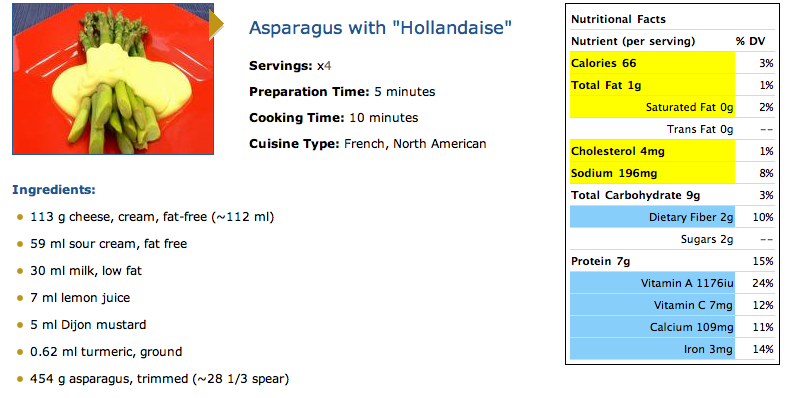Author Archive
The Big 0 -3!
April 12 2011
My daughter turns three on Friday.
She has requested a very specific cake for her birthday…because turning three is all about the cake! She has asked for a “chocolate heart shaped cake with pink icing”. Instead of buying a heart shaped mold to use for one cake (well, hopefully one cake) I will use a square pan and a circle pan to make a heart shape. Just place the squar e cake on an angle, cut the circle cake in half and place the halves on two adjoining sides of the square and voila! Heart shaped cake.
e cake on an angle, cut the circle cake in half and place the halves on two adjoining sides of the square and voila! Heart shaped cake.
As for pink icing, there’s not really any option of avoiding awful food colouring. I think a special treat once in a while is no big deal. Sugary desserts every now and again are okay for our family because we try to limit the amount of sugar in our diets on a regular basis, therefore a bit of indulgence now and again is no biggie.
Sugar becomes an issue if, like most things, it is consumed in excess. We’re very much an “everything in moderation” kind of family. We don’t avoid salt but we limit it. We are very aware of how much we have daily. We don’t cut all fats but again, we are aware of the amount we consume.
I am taking my wife out for her birthday dinner this week (it is birthday FEST around our house right now) and I am sure I’ll order something on the heavier side. That just means that meals on the day before and the day after will be lighter. Same goes for my daughter’s birthday celebration…there will be excess of sugar on that night for sure but we’ll temper that with healthier choices throughout the week.
Chef Paul: Get back at Dandelions!
April 08 2011
 The scourge of every lawn, the ubiquitous dandelion is seen as a pest by almost everyone…everyone except us cooks. While I’m not about to dispense lawn care advice I can tell you how you can get back at the dandelion for ruining your lawn…EAT THEM! That’s right! Eat them!
The scourge of every lawn, the ubiquitous dandelion is seen as a pest by almost everyone…everyone except us cooks. While I’m not about to dispense lawn care advice I can tell you how you can get back at the dandelion for ruining your lawn…EAT THEM! That’s right! Eat them!
One of the first greens of the season every year is the dandelion. That lowly weed packs a nutritional wallop. One cup of dandelion greens contains 188% of your recommended daily intake of Vitamin K; 54% of your Vitamin A and lots of Calcium and Iron.
Dandelions help with digestion, reduce swelling and inflammation, and treat viruses, jaundice, edema, gout, eczema and acne. A relative to the sunflower, the dandelion boasts potent medicinal properties with laxative and diuretic properties (in French we call them pissenlit, which translates as: “wet the bed”).
These bittersweet greens are usually plentiful and affordable but must be picked before they flower or they’re just too bitter to eat. Now, I’m not suggesting you should go outside right now and dig up your lawn; you can often find dandelion greens at the farmer’s market or health food stores.
As I said, they are quite bitter tasting and therefore not everyone’s cup of tea. Dandelions can be used in a salad either mixed with other greens or on their own or even in a stir fry. Because of their bitterness, most people tend to use a sweet-ish dressing with them. I like to dress them with a Dijon mustard vinaigrette. Be careful when tossing them in a vinaigrette, they tend to clump together very easily if you add too much dressing. Add a bit at a time and taste as you go.
They’re nutritious, plentiful and if you pick them out of your own lawn, free! And, you get a nice lawn out of the deal! What more could you ask for?
Chef Paul: I struck out on Sunday
April 04 2011
For Sunday dinner this week I made a wonderful roast pork shoulder. It was marinated for 24 hours with garlic and oregano and served with French lentils, roasted candy cane beets, turnips and sweet potatoes. I thought it was fantastic! The pork was flavourful and very moist; the accompaniments were great; and the wine we had was a perfect pairing…unfortunately, neither my wife nor our three year old agreed (the three year old really knows her wine). Neither of them was very keen on the pork. The lentils went over OK but the sweet potatoes, beets and turnips less so.
was flavourful and very moist; the accompaniments were great; and the wine we had was a perfect pairing…unfortunately, neither my wife nor our three year old agreed (the three year old really knows her wine). Neither of them was very keen on the pork. The lentils went over OK but the sweet potatoes, beets and turnips less so.
It just goes to show that everyone has an opinion when it comes to food…and no one’s opinion is necessarily wrong. There is one universal truth in this world…we all need to eat! And because we all eat, we all have an opinion about what we like and dislike.
What I did appreciate is that both my wife and daughter tried everything on the plate, that’s all I ask. Like most three year olds, my daughter can be very fussy at times. What was a hit last week might very well be a miss the next (I’ve even resorted to taking photos of her as she eats to prove to her that she did in fact like broccoli last week!). And it’s not just three year olds; I too have my likes and dislikes, such as calves’ liver or canned salmon. Eating is a very personal and yet communal thing.
That’s why it can be tough and sometimes frustrating trying out new food ideas. Many folks are not very receptive to change; they know what they like and are not willing to try anything beyond that. But what we need to remember is that for a lot of people, their food choices are slowly killing them. Too many amongst us are eating diets high in fat and sodium. Too many folks are eating their way to diabetes. Too many people are not willing to change their eating habits. It’s tough…no one wants to eat food they’re not going to like (or that they THINK they’re not going to like). But changes need to be made. Eating healthy meals needs to become a priority for ourselves and our loved ones. You might not always like what you’re eating but you owe it to yourself to at least try it. It’s important for you to make that commitment. I guarantee that if you go in with an open mind, you’ll discover wonderful new flavours and delicious meals you’d never thought you’d like.
Chef Paul: It’s almost asparagus time!
April 01 2011
Spring has to be my favourite time of year as a cook. I look forward to the arrival of asparagus to the farmers market…a sure sign of spring. Asparagus will be followed soon thereafter by fiddleheads and then…the flood gates open! Buying fresh local produce is a must. Not only will it last longer, the taste is just that much better. For my lunch today, I packed myself some spinach for a salad. As I’ve said previously, I wash and spin every green or vegetable that requires it when I get home from the market. Well, today’s spinach salad will feature spinach purchased March 19th…that’s two weeks ago! There is NO WAY a bag of spinach from the grocery store would EVER last that long…often the spinach is half turned to liquid by the time you get it home.
Soon there’ll be a huge variety of fresh produce at the market: lettuces, tomatoes, kale, Swiss chard, bok choy…
And then fresh fruit arrives! Is there anything better than a sun ripened strawberry? Still warm and oh so juicy! It’s all still a little ways away, probably a few weeks yet until asparagus arrives. It’s almost like Christmas for a chef…Christmas that lasts all summer long.
By the time asparagus season has run its course, we’ve usually had our fill.
Here’s a low fat take on an asparagus classic:
Chef Paul: Burgers for BBQ
March 28 2011
I picked up our new BBQ on Saturday thanks to a neighbour with a trunk. Despite today’s weather, a balmy high of 1C, BBQ season is just around the corner. For those of you fortunate enough to reside in warmer climes, well…I’m quite jealous.
I love to barbecue. It’s not the primal “man make fire” thing for me, it’s mostly not having as many dishes to wash! Yep, that’s one of the major perks of BBQing… much less cleanup.
We needed a new BBQ because ours was on its last legs…well actually, on its last leg – literally. One legged barbecuing is not for the faint of heart either, so a new BBQ was purchased. Now, I like propane BBQs myself. Though I do love the flavour of charcoal briquettes, the ease and speed of a good gas grill is what we need around our house.
Even though ours is a brand new ‘cue, I will still go through the spring cleaning/maintenance checklist. That means I will be sure to check my gas lines with a soap solution; clean out the burners; scrub down the grill rack and then “season” the grill by heating it up at full heat for at least 20 minutes. If yours is an older BBQ, make sure to check it for any rust spots as well.
Come summer time, we pretty much barbecue EVERYTHING…well everything food that is. So to get ready, I placed an order for 10lbs of lean ground beef from my favourite butcher at the farmer’s market. He’ll have fresh, grass fed ground beef for me next Saturday and then I will make patties which I’ll freeze to use throughout the spring and summer. I usually get about 3 to 4 patties per pound which would mean 35 burgers when all’s said and done. At a cost of $40 for the meat and roughly $5 for the remaining ingredients (mustard, herbs, spices, egg and bread crumbs) that works out to $1.30 per patty. Sure, you can buy the pre-made frozen “convenience pack” of patties for around $20 for 30, or the “gourmet Angus beef” patties for $10 for 8, but I know EXACTLY what I’ll be putting in my burgers. There’ll be no “flavour” as an ingredient (what is that anyhow…shouldn’t all products have flavour?), no endless amount of beef filler or other mystery ingredients. It will take a bit of time to make 35 patties of course but I think my family is worth the extra effort.
Eating healthy and planning meals requires a commitment…you owe it to yourself and your loved ones to make that commitment.
Chef Paul: Garden Update
March 25 2011
As you can see from this photo, things are progressing quite nicely with our garden.

It’s been 9 days since they were planted and about half have sprouted and are doing quite well.
Once they reach a certain height, we’ll remove the cover and leave them under the grow lights for a few weeks until they can be transitioned to outside.
Chef Paul: Grocery Shopping
March 25 2011
People hate grocery shopping with me. Why? Because I’m s-l-o-w. The reason I’m so slow is that I like to take my time  and read the labels on everything I buy. For the very few food items we actually buy at the grocery store, I like to make sure I know what I’m getting. My very simple rule is: If I cannot pronounce the name of the ingredient, I do not buy the item.
and read the labels on everything I buy. For the very few food items we actually buy at the grocery store, I like to make sure I know what I’m getting. My very simple rule is: If I cannot pronounce the name of the ingredient, I do not buy the item.
I do of course read the nutrition facts labels to see the amount of sodium and sugar that is in the item. I exercise a lot so fat is lower down on my list of things I need to be wary of. It always amazes me what “ingredients” are in processed “foods”. There can be no way that chicken nuggets with a list of over 30…yes 30… ingredients can be good for you. Come on! What do you need to make a chicken nugget? I’ll tell you:
- Chicken
- Bread crumbs
- Egg and flour to dredge the chicken pieces in so that the bread crumbs will stick
- Some seasonings like salt, pepper, maybe some herbs or other spices.
THAT’S IT!!! Maybe 6 ingredients…not 30!
We cannot assume that because it’s for sale in the grocery store, and that our “food agencies” have approved it, that it is any good for us. It’s these so called “convenience foods” that are conveniently turning North Americans into overweight, diabetic, energyless sloths that crave more sugar and more sodium.
These days everyone seems more concerned about food costs than about their health. But can you really disassociate the two? Sure, the immediate costs of a poor diet are not as obvious, but when you factor in the health care costs; cost of medications; and of lost wages should you develop diabetes because of a poor diet, then it becomes clear where your priorities should lie.
It may seem less expensive getting the $4.99 burger special at the fast food joint- but will it really cost you less in the long run?
Chef Paul: Indian Food
March 22 2011
My family loves Indian food. But we very rarely go out for Indian as my wife has become quite an accomplished Indian food cook. This wasn’t always the case.
When we first moved in together, years before we married, my wife rarely cooked at home. It all comes back to one fateful romantic weekend getaway at a friend’s cottage when she asked if she could help with dinner. I said: “Sure. You can whip the cream for the strawberry dessert.” Being intimidated with “helping a chef” she quickly turned that cream into butter…turns out I was supposed to tell her when to stop, even though she’s made whipped cream many times before.
Since then, the standard response when asked if she ever cooks at home is: “Why would I? I can make mashed potatoes or let Paul make better mashed potatoes.” But because my wife did grow up in a household where family supper was important and home cooking was a must, she has a true love of food and cooking. She was not about to let me do all the cooking forever. What my wife did is immerse herself in Indian cookbooks. Her rational was: “Here’s something he never cooks.”
Now, luckily for me, we have what I call “Indian feasts” on a regular basis. I call them “feasts” because it’s usually not just one or two dishes…it’s more like 10 to 15!!! My wife will spend all day cooking a huge, fantastic feast and then cool and freeze the leftovers for lunches…and boy do I LOVE those lunches. The aroma of cardamom and coriander permeate the house and have me salivating at the thought of her saag paneer, the chicken tikka masala or the wonderfully spicy daal she makes. I’ll gladly do the dishes (all 100 of them) just to savour her incredible meals.
This just goes to show that you don’t need to be a professional or an expert foodie to cook great meals, all you need is the desire and the passion to eat well.
Chef Paul: Certain Vegetables and Fruits
March 18 2011
In 2007, Canada’s Food Guide upped their recommended amounts for servings of vegetables and fruits to between 7 to 10 daily…don’t worry, that’s a combined total.
It still seems like a lot.
When you consider that a serving is equal to one medium sized fruit, ½ grapefruit, 1 cup of fruit salad, ¼ cup dried fruit, ½ cup 100% fruit juice, ½ cup of cooked or raw vegetables, 1 cup salad greens, and ½ cup 100% vegetable juice, it can be difficult to get that many fruits or vegetables into your diet; difficult, but not impossible.
The key is, again, to plan ahead. If you plan to have a least two portions of fruit with your breakfast, say a banana and maybe some berries with your cereal; and then make sure to bring a green salad, a side vegetable or some carrot sticks for a snack and at least 1 whole fruit for lunch, you’re already at 5 servings of fruits and vegetables.
With dinner, serve at least two side vegetables or one side and a salad and voila! You’ve reached your target of 7 servings…of course this is your minimum target. Have some fruit for dessert and between meal snacks and you easily attain the recommended amounts.
We North Americans have a diet which consists primarily of meat and potatoes. Now I LOVE me some meat and potatoes but I do know that eating my full share of fruits and veggies helps me maintain my health and gives me plenty of energy to deal with my soon to be three year old…and trust me, you NEED energy for that. As I sit here at my desk, I’ve got 2 oranges and a banana in front of me…okay, make that 1 orange (it was just sweet and tart enough) and one banana. In our staff fridge, I’ve got my yogourt (local organic) and wild blueberries (also local), my spinach salad (local organic) and some arugula (also… yeah, you get the idea) that will find its way into my gnocchi. I purposely packed myself a vegetarian lunch today because I planned on burgers for dinner…and usually we have fries (baked potato wedges) with our burgers and we don’t have salad, though we probably should. (I think I just guilted myself into making a side salad now)
For breakfast, I had steel cut oats and an apple (along with OJ, toast and a coffee). Therefore, adding up my totals for today, I have 8 servings of mostly fruit with some veggies…not bad.
Once you get into the habit of planning out your meals, achieving the recommended amounts isn’t really that hard…you just have to plan.
P.S. Here’s a quick update on our garden. The seeds have begun to sprout already! It’s only been 6 days since my wife planted them but they are well underway. I’ll take some photos this weekend to share with you.
Chef Paul: Cost of Food
March 15 2011
Everybody is talking about the cost of food these days…or more specifically, how to save money on food bills.
The average North American spends about 15% of their household budget on food. That’s a big chunk of change. Recent reports indicate that the price of food will NOT be going down anytime soon…if ever. So, how do we cope with higher food costs?
There are many ways my family is dealing with this food price hike. This past weekend, my wife purchased several seeds which we’ll be starting under our grow lights which sit on a shelf I built in the basement…tall enough that the cat can’t reach it. We’ve got some Swiss chard, basil, lettuces, beets, carrots, beans, tomatoes, zucchini and probably a few more I’m forgetting. Once they’ve germinated and reached a certain height, we’ll be able to transplant them outside. Now, I realize not everyone has grow lights or enough outdoor space for a larger garden, but you’d be amazed at how little space you need to grow some vegetables. You could even consider transforming your front yard to garden space…who says it has to be all grass?
We purchased our home in mid March about 10 years ago and after having lived in apartments for 20 years before this, I remember thinking “I’ll have to buy a lawn mower now”. We were both shocked come spring as the snow melted to discover that our entire front yard was planted perennials and not grass! My wife then quickly purchased some gardening books and visited the local gardening store to learn how to cope with this. The front yard then became her domain while I was relegated to the back yard (self imposed)…and because the backyard was dominated by a HUGE garage (torn down last spring…FINALLY) and a massive red maple tree, there was little opportunity for grass let alone vegetables to grow.
A few years on now and a major backyard reno later (the tree is still there but the garage has been replaced by a much smaller shed), we’ve built ourselves several garden boxes and transplanted about half of the front yard with vegetables. Now amongst our rose bushes and lilacs are beautiful Swiss chard, vibrant green basil and even a few broccolis.
Yes, we’re lucky enough to have the space to plant vegetables but there are many ways to grow veggies indoors as well as in confined areas…don’t let apartment dwelling stop you from growing some of your own food.
Now, growing your own vegetables is not the only way to save money on food costs. Planning your weekly meals ahead of time is a must. If you go to the grocery store or farmer’s market with a list and (here’s the important bit) STICK TO THAT LIST, you’ll definitely save money. Don’t believe me? How many times have you had to head back to the grocery store to pick up that red pepper you forgot only to leave with $20 less in your wallet? And it wasn’t all spent on really expensive red peppers either. We plan out all our weekly meals and buy foods accordingly. We’ll go through our fridge, freezer and pantry area and make sure we’re planning meals that use up any items we already have before purchasing more.
We also try to buy everything we can from the farmer’s market. When it comes to vegetables it is very important to buy fresh even if the cost is a little bit more. When we buy our $2 head of lettuce at the farmer’s market, we know it will last a week. Often, especially in winter months, you might pay less for a head of lettuce at the grocery store but you end up throwing half of it out…is that really saving you money? The closer it’s grown to your home, the longer it will last and the cheaper it becomes in the long run.


